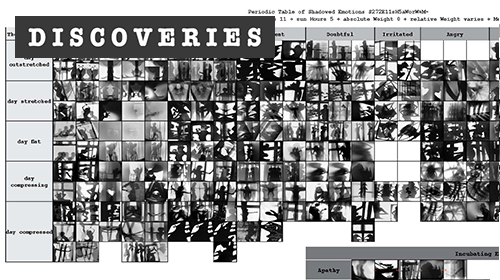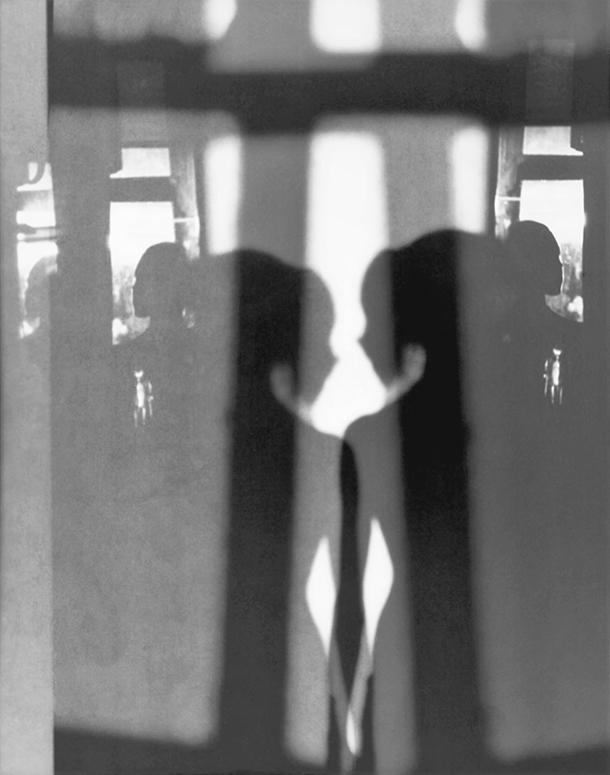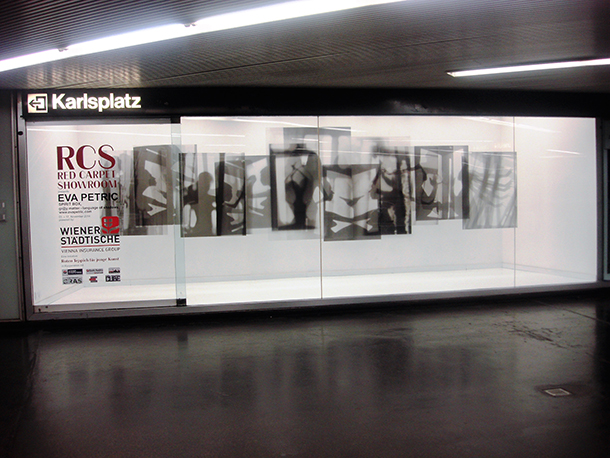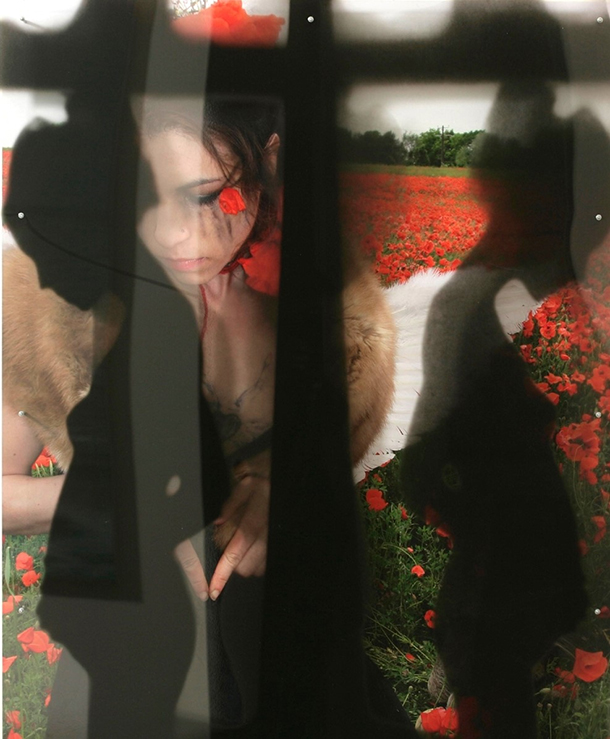
AN ARTIST LOOKS DEEPLY, WITH THE EYES OF A SCIENTIST AND THE HEART OF A POET, AT SOME VERY EPHEMERAL SUBJECTS
by Edward M. Gómez
To say that something smells rather unusual about Eva Petric’s work might just be one of the highest compliments one could pay to this artist’s distinctive creations.
Dividing her time between Ljubljana, the capital of Slovenia; Vienna, Austria; and New York City, where she is represented by the dealer Andreas Keller’s gallery, Olfactory Art Keller, Petric is a multimedia artist who is interested in — and has been known to examine or use as both the subjects and the raw materials of her art — scents, shadows, and human emotions.

For a master’s-degree thesis she produced in conjunction with a study program sponsored by the Transart Institute, an organization affiliated with various university-level schools in Europe, Petric explored her interest in all of those subjects. Her thesis project became a limited-edition book, Gr@y Matter — Language of Shadows.
Petric told brutjournal, “I’ve always been interested in fragrances and also in the way a fragrance bottle looks and the message it wants to convey — the entire product as a work of art. Especially interesting to me was testing out what kinds of feelings certain fragrances were able to generate and regenerate — from myself — and whether I could see them as an extension of myself, as my shadows, in a way.”

The artist, who grew up in Ethiopia and India, recalled, “My childhood was abundant with imagination and intense, outside stimulus, since I grew up at the time when the Internet and cell phones were not part of our everyday reality. My time in India especially influenced my interest and understanding of smells and fragrances. I was able to see how certain environments differed from others in terms of fragrance and I also noted the remarkable attention that is placed on flowers in India. Such observations forever marked me and made me most fond of flower-based perfumes.”
Gr@y Matter — Language of Shadows, a 1215-page, hardcover book measuring 20 by 29 centimeters (7.8 x 11.42 inches) contains what Petric describes as “about 300 analog monochrome photographs of shadows, most of which were manipulated in the darkroom, paired with different emotions and placed into a periodic table of shadow emotions that displays [what I refer to as] ‘the universal language of shadows.’”

Describing the book, Petric added, “Throughout Gr@y Matter — Language of Shadows, thoughts about shadows from 50 individuals of different nationalities, professions, genders, ages, and cultures from all over the world are included in their original languages; they all responded to my open call asking for their particular associations regarding shadows, from which I decoded whether or not it is possible to perceive emotional resonances or connections to shadows, based on my respondents’ associations.”
With her analysis of shadows, Petric has attempted to “translate” their communicative power “into the language of emotions.”
All humans are capable of producing shadows, the artist noted. Likewise, she added, “we are all endowed with emotions. Parallel to our material existence, presented through chemical elements and molecules, emotions determine our immaterial existence. Shadows, when looked at, usually produce associations that are connected to emotions. That is why I used emotions as the medium of the language of shadows.”
Petric said, “I took photographs of my own shadow for one year at different times of the day and in different weather conditions. I used different analog films and printed my shadow photos on papers with differing characteristics. To further codify the language of shadows, I adapted the periodic table of the elements from the natural sciences, replacing chemical elements with various emotions that are displayed using photographs of shadows to represent them.”

For Petric, this audaciously modified periodic table borrowed from the world of science “represents the DNA of our emotional existence.”
Her periodic table of the emotions displays what she calls “the so-called primal emotions” as well as “advanced emotions or emotional attitudes.” She explained, “Within my project, these ‘advanced shadow emotions’ are the result of ‘incubating emotions’; they range from apathy to anxiety and further on to intolerance on the one side, and on the other side, to idealism.”
Giving tangible, visible form to subject matter as ephemeral as shadows and human emotions was no small challenge. We were further intrigued by Petric’s description of her approach to formulating original fragrances of her own — and by how far, literally, she would like to take her investigations in this field.

She said, “Shadows and emotions share many similarities. Both are immaterial, yet present; they’re ever-changing — appearing, disappearing, and then reappearing; they’re full of potential; and they’re earth-bound, connecting us to the Earth.”
“In perfume-making — in creating my fragrances — I look to my visual art of shadows from my Periodic Table of Shadowed E@motions to guide me, both visually as well as conceptually. Visually by the emotions I feel when I look at a particular shadow image in my periodic table and conceptually by the ingredients I decide to include for the particular head, heart, and base notes of the fragrance I’m designing. I’m particularly interested in materializing the part of my periodic table that visualizes newly forming and newly discovered emotions, which are sequenced to form newly appearing or imagined emotional states.”

When it comes to concocting new scents, Petric thinks fine and she thinks big.
She told us, “When creating a new perfume, I tend to think about what emotions may be missing in today’s world. To bring about acceptance of new emotions, one has to work with existing ingredients that are familiar to us humans on a collective, universal level, as well as introduce new ones, which we will sooner or later need to address. In this way, a fragrance’s relation to antiquity and its ability to connect to people in a universal way can be also seen as some type of recycling act, an act by which ancient emotions may be included in a fragrance, enabling them to be preserved and also passed on to future generations.”
More philosophically, the artist observed, “Fragrances can keep alive all that it means to be human on an emotional level and at the same they can be useful in preventing humans from undergoing desensitization in foreign environments such as outer space.”
That’s an outlook that is marked by a whiff of deep humanism — and with that spirited notion in mind, we’ll be looking forward to savoring Petric’s original fragrances somewhere in a cozy crater in the shadows of the Moon.
to read the whole article.


